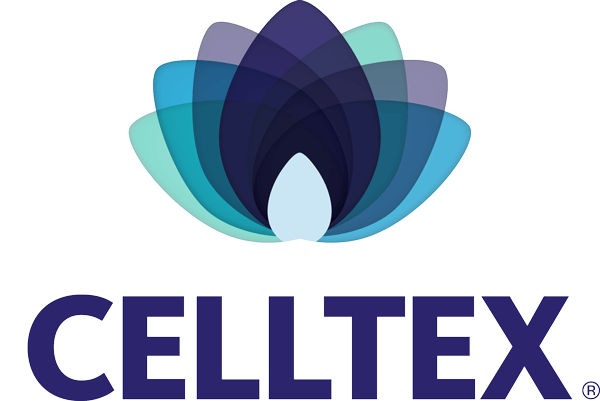Celltex News
What Makes MSCs So Promising? A Deep Dive on Mesenchymal Stem Cells
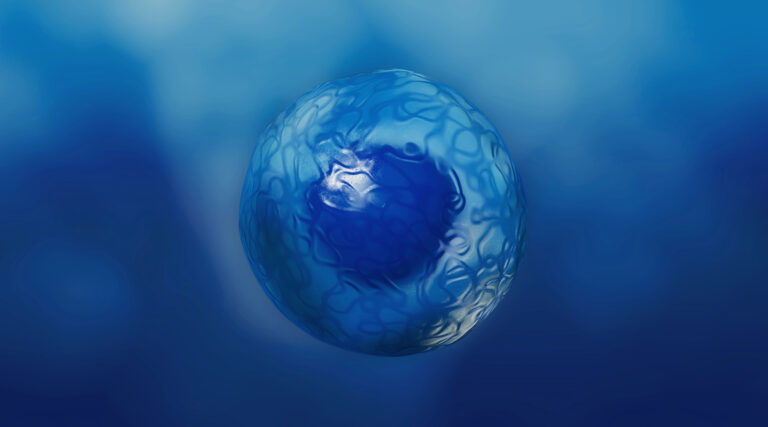
If you’re curious about how stem cell therapy works, it’s important to understand what stem cells are and where they come from. To begin, let’s look at the original source of stem cells and their development.
As you might remember from high school biology classes, a human embryo starts off as a newly fertilized single cell (a zygote) resulting from the fusion of two gametes (the egg and the sperm). The resultant zygote will undergo rapid cell division and development first into a blastocyst and then into an embryo. It is this blastocyst that is the source of all stem cells—embryonic stem cells (ESCs) at this point.
As the blastocyst evolves into an embryo, three layers of cells will form: the endoderm, the ectoderm, and the mesoderm. These three cell layers will be the foundation of all the body’s essential structures and organs.
The innermost endoderm layer gives rise to the digestive and respiratory systems while the outermost ectoderm layer gives rise to skin and the nervous system. The mesoderm, the middle layer of the embryo, gives rise to a wide range of tissues, including muscles, bones, cartilage, and the circulatory system. It is from the mesoderm layer from which Mesenchymal Stem Cells (MSCs) are derived. [1]
Present in the body throughout one’s lifespan, adult MSCs can be used in many types of regenerative medicine. If you want to know how stem cell therapy works, it’s essential to familiarize yourself with MSCs and their regenerative potential.
What Are Mesenchymal Stem Cells?
Stem cells are like cellular blank canvases, from which different types of cells may develop. By undergoing differentiation, stem cells may become specific cell types, such as neurons, muscle cells, skin cells, etc. [2]

MSCs are a type of multipotent stem cell found in various tissues (including bone marrow, adipose tissue, and umbilical cord tissue). Multipotent means that the cells have the ability to differentiate into multiple types of cells, such as:
- Osteoblasts (bone cells)
- Chondrocytes (cartilage cells)
- Adipocytes (fat cells)
- Myocytes (muscle cells)
- Tenocytes (tendon cells)
- Fibroblasts (connective tissue cells)
- Neurons (nerve cells)
- Oligodendrocytes (support cells in the nervous system)
Key features or properties of MSCs are: 1) Self-renewal—MSCs divide and make identical copies of themselves, 2) Genetic integrity—MSCs are highly stable with minimal changes to underlying genes and DNA sequence (i.e., limited mutations), 3) Unspecialized—MSCs are relatively immature and have not developed into specific cell types, 4) Potency—as discussed above MSCs can develop into many different cell types, and 5) Longevity—MSCs can multiply (renew and increase cell numbers). [3]
Importantly, once isolated from a patient, MSCs can be cultured in a lab and re-introduced therapeutically into the body to treat many conditions and diseases. The reintroduced MSCs may release bioactive factors that can have several health benefits. [3, 4]
In fact, some studies suggest that these bioactive factors may play a greater role in the regenerative properties and effects of MSCs than the MSCs themselves. [4]
An Updated Understanding of the Role of MSCs in Regenerative Medicine
From the mid-20th century until roughly a decade ago, the conventional thinking was that MSCs’ self-renewal and differentiation properties contributed directly to tissue repair and regeneration in the body.
If you were to have asked a physician 10 years ago, “How can MSCs help my bum knee,” they would have likely responded like this:
“When injected into your knee, MSCs differentiate into chondrocytes, which will help to repair the damaged/defective cartilage.”
Today, we know that the role of MSCs is much more complicated than this. While a limited number of MSCs may actually differentiate and directly incorporate into the damaged area, it is more likely that the MSCs will exert other actions to achieve a therapeutic effect.
As you will learn in this article, MSCs are involved in several biological activities that contribute to their therapeutic potential. However, many people still believe that the only benefit of stem cells lies in their ability to differentiate into, say, chondrocytes in the knee.
Dr. Arnold Caplan, known as the “father of mesenchymal stem cells,” spent years educating people on the fact that there’s more to MSCs than differentiation. This limited role, he contended, has misled the public as to how MSCs work in stem cell therapy. In a 2017 article published in Stem Cells Translational Medicine, Caplan argued that the term ‘stem cells’ implies direct differentiation into regenerating tissues, leading to patient misconceptions.
“Unfortunately, the fact that MSCs are called ‘stem cells’ is being used to infer that patients will receive direct medical benefit, because they imagine that these cells will differentiate into regenerating tissue-producing cells. Such a stem cell treatment will presumably cure the patient of their medically relevant difficulties ranging from osteoarthritic (bone-on-bone) knees to various neurological maladies including dementia.” [5]
Because there’s more to MSCs than their ability to differentiate into other cell types, Caplan argued “that we change the name of MSCs to Medicinal Signaling Cells to more accurately reflect” the other important biological processes these cells are involved in. [5]
Mesenchymal Stem Cells and Bioactive Factors
Beyond their ability to differentiate and self-renew, MSCs secrete a variety of molecules that help support the growth, survival, and function of other cells in the body.
MSCs release these bioactive factors that can help regulate several processes in the body, including inflammation, fibrosis, apoptosis, angiogenesis, oxidative stress, and more.
Paracrine Signaling
MSCs release growth factors, cytokines, and extracellular vesicles to communicate with and influence the behavior of surrounding cells. [6]
Theoretically, for someone who has experienced a myocardial infarction (heart attack), MSCs can secrete factors that promote the survival and regeneration of heart muscle cells, improving cardiac function.

Mitochondrial Donation
MSCs can also donate cellular components, such as mitochondria. By transferring their functional mitochondrion to recipient cells, MSCs enhance cellular bioenergetics and improve oxidative phosphorylation. Oxidative phosphorylation is the process by which cells convert nutrients into energy using oxygen and generate ATP, the primary cellular energy source. [7]
As another example, in acute lung injuries, MSCs may transfer mitochondria to alveolar epithelial cells, improving their metabolic function and enhancing lung repair processes.
Immunomodulation
MSCs can modulate the immune system by secreting either pro-inflammatory or anti-inflammatory cytokines, direct cell-to-cell contact, or a combination of both mechanisms. By secreting anti-inflammatory cytokines and interacting with immune cells, MSCs may suppress inflammatory responses. This ability to modulate immune cell activity and response helps to create a favorable environment for tissue repair and reduces the risk of immune rejection. [8]
For example, in autoimmune diseases like Crohn’s disease, MSCs can reduce inflammation in the gastrointestinal tract, promote healing, and help reduce symptoms. [8]
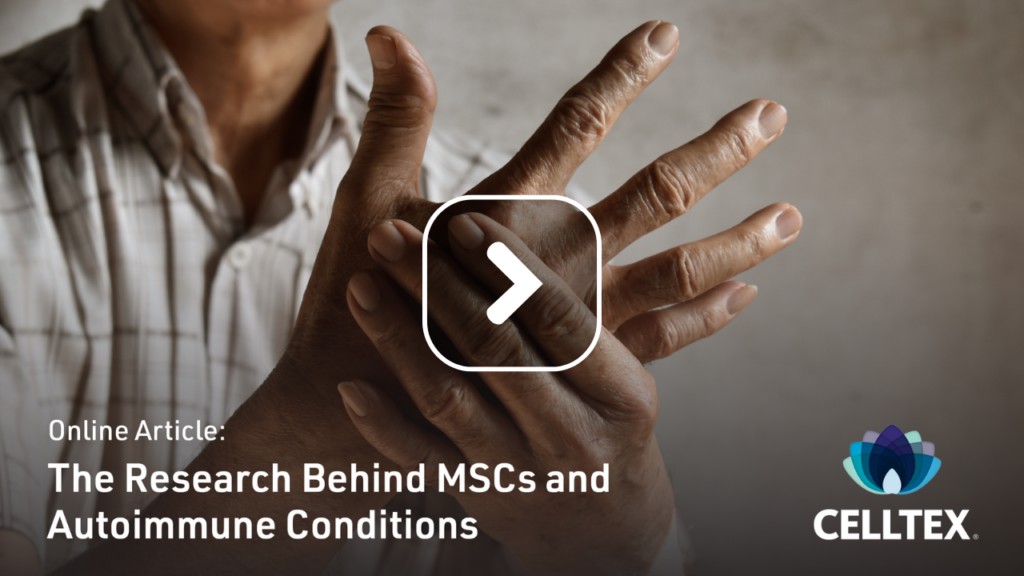
Anti-Fibrosis
By inhibiting the formation of non-functional fibrotic tissue (scar tissue), MSCs can help preserve the normal architecture and function of tissues following an injury. [9]
For someone with a condition like liver fibrosis, the anti-fibrotic effects of MSCs may help improve liver function and limit the progression of chronic liver disease. [10]
Anti-Apoptosis
Programmed cell death or apoptosis is a normal biological process. It is crucial in maintaining tissue homeostasis and eliminating damaged or unnecessary cells.
MSCs can protect healthy cells and limit dysfunctional apoptosis “through their plasticity and their capacity to release bioactive molecules and transfer organelles.” [11]
One potential example of the anti-apoptotic effects of MSCs is in acute kidney injury (AKI). In AKI, renal tubular cells can undergo apoptosis due to ischemia (lack of blood flow) or toxicity. MSCs have been shown to secrete factors that protect renal tubular cells from apoptosis. [12]
Promoting Angiogenesis
MSCs can promote the formation of new blood vessels by secreting growth factors like vascular endothelial growth factor (VEGF). [13]
This is crucial for supplying oxygen and nutrients to regenerating tissues. For example, in diabetic foot ulcers, MSCs can promote wound healing and reduce the risk of amputation. [14]
Reducing Oxidative Stress
Most of us are aware of the dietary sources of antioxidants (such as foods that contain vitamins C and E), but there are several endogenous antioxidants that prevent oxidative stress—a harmful imbalance of free radicals and antioxidants within the body that contributes to aging and the development of several diseases.
MSCs can secrete or increase the endogenous activity of antioxidants such as superoxide dismutase, catalase, and glutathione peroxidase. By secreting these antioxidant molecules and/or upregulating the expression of antioxidant enzymes in damaged tissues, MSCs protect cells from oxidative damage and support tissue repair. [15]
For example, in chronic obstructive pulmonary disease (COPD), MSCs may mitigate oxidative stress in lung tissues, reducing inflammation and improving lung function. [16]
Neuroprotection
MSCs can support the survival and function of neurons by secreting neurotrophic factors that help control the inflammatory environment in the nervous system. As stem cell therapy continues to evolve, the hope is that the secretion of these factors will help overcome neurodegenerative diseases. [17]
For example, in Parkinson’s disease, MSCs may provide neuroprotection and promote the regeneration of dopaminergic neurons, potentially reducing tremors, and improving motor symptoms and quality of life. [18]
» Learn more about stem cells and Parkinson’s disease.
Homing
MSCs migrate to sites of injury, guided by inflammatory signals from damaged tissues. This targeted migration ensures that MSCs reach the areas where they are most needed for repair and regeneration.
For example, in stroke patients, MSCs may migrate to the damaged brain tissue, potentially aiding in the recovery of neural functions and reducing neurological damage. [19]
Potential Applications for MSC Therapies
As you can see, even if stem cells aren’t directly differentiating into specialized cell types, that doesn’t mean they aren’t exerting a significant influence. It’s largely the recruitment of local cells, endogenous MSCs, and other mechanisms that provide direction for restoring function and stimulating dormant or dysfunctional cells.
The MSCs’ ability to home to damaged areas and communicate with local cells potentially makes them suitable for a variety of therapeutic applications, from alleviating symptoms of a chronic condition to preventing or delaying the onset of age-related diseases.
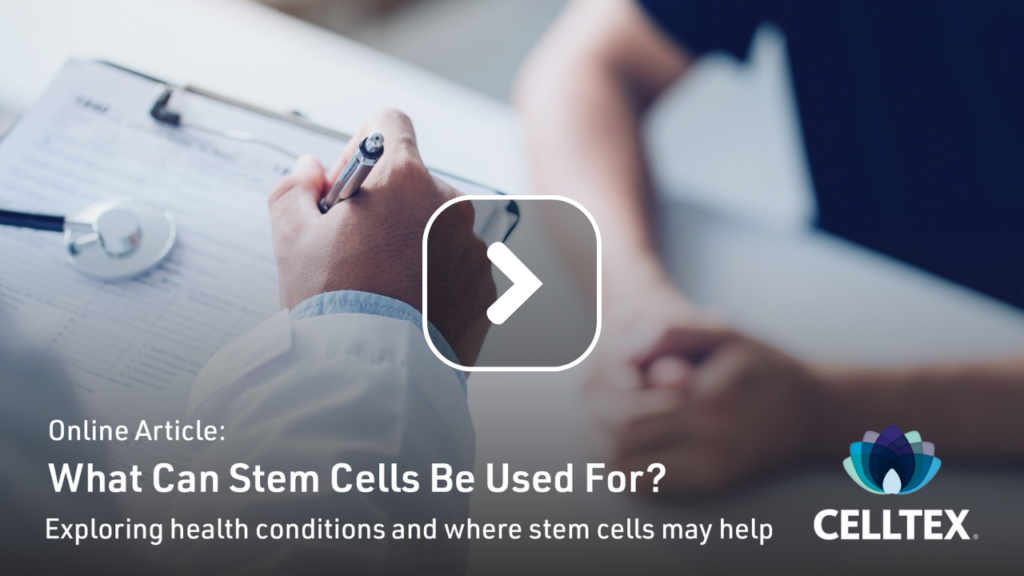
Although you already have stem cells in your body, the number and quality of stem cells in most body tissues will decline as you age. Furthermore, stem cells will lose potency over time, although several factors may influence the degree of this decline.
Eventually, the number of stem cells in one’s body may not be enough to address chronic conditions, serious injuries, or complications that often come with aging. That’s why banking your stem cells with Celltex is recommended.
Adult Stem Cell Banking: The Celltex Difference
An industry leader in stem cell banking since 2011, Celltex is revolutionizing regenerative medicine with the process of Adult Stem Cell Banking, the critical first step in the stem cell therapy process that separates Celltex from other regenerative medicine options.
Adult Stem Cell Banking with Celltex involves:
1. A simple, one-time extraction (mini liposuction) of an individual’s fat tissue
2. Isolating the MSCs from that tissue sample
3. Expanding the pure MSCs in quantity
4. Cryopreserving a lifetime supply for future therapeutic uses
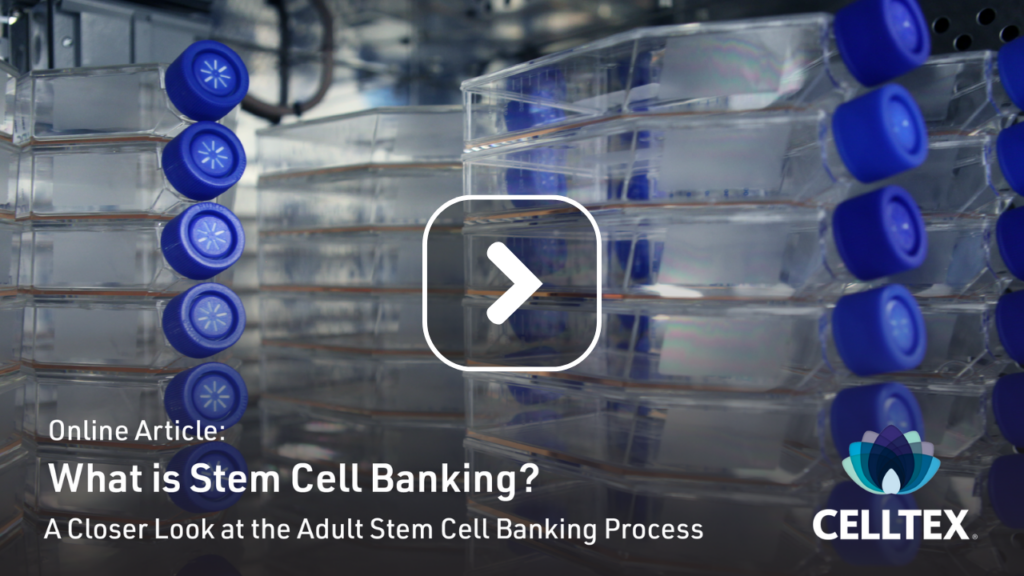
Celltex’s technology enables an individual’s banked MSCs to be expanded into quantities exponentially greater than that of other regenerative medicine offerings, greatly increasing the potential for positive results when therapeutic application is necessary.
This difference in cell quantity, along with the compatibility from using one’s own cells, contributes to the superior quality of Celltex-produced MSCs. Celltex-produced MSCs have the potential to succeed where other stem cell therapies may have failed before. In fact, Celltex-cultured MSCs have been used in over 10,000 stem cell therapies with no severe adverse events.
Learn More About Celltex
Interested in learning more about Celltex? Request a virtual brochure, watch our educational webinars, or contact us directly.
If you’re in the Houston area, you can schedule a tour of our lab in person or tour it virtually.
References:
- Williams, A. R., & Hare, J. M. (2011). Mesenchymal stem cells: biology, pathophysiology, translational findings, and therapeutic implications for cardiac disease. Circulation research, 109(8), 923–940. https://doi.org/10.1161/CIRCRESAHA.111.243147
- Bunnell, B. A., Estes, B. T., Guilak, F., & Gimble, J. M. (2008). Differentiation of adipose stem cells. Methods in molecular biology (Clifton, N.J.), 456, 155–171. https://doi.org/10.1007/978-1-59745-245-8_12
- He, S., Nakada, D., & Morrison, S. J. (2009). Mechanisms of stem cell self-renewal. Annual review of cell and developmental biology, 25, 377–406. https://doi.org/10.1146/annurev.cellbio.042308.113248
- Han, Y., Yang, J., Fang, J., Zhou, Y., Candi, E., Wang, J., Hua, D., Shao, C., & Shi, Y. (2022). The secretion profile of mesenchymal stem cells and potential applications in treating human diseases. Signal transduction and targeted therapy, 7(1), 92. https://doi.org/10.1038/s41392-022-00932-0
- Caplan A. I. (2017). Mesenchymal Stem Cells: Time to Change the Name!. Stem cells translational medicine, 6(6), 1445–1451. https://doi.org/10.1002/sctm.17-0051
- Yu, H. Y., Shin, J. H., Yun, H., Ryu, C. M., Lee, S., Heo, J., Lim, J., Park, J., Hong, K. S., Chung, H. M., Shin, D. M., & Choo, M. S. (2021). A Preclinical Study of Human Embryonic Stem Cell-Derived Mesenchymal Stem Cells for Treating Detrusor Underactivity by Chronic Bladder Ischemia. Stem cell reviews and reports, 17(6), 2139–2152. https://doi.org/10.1007/s12015-021-10204-z
- Tan, Y. L., Eng, S. P., Hafez, P., Abdul Karim, N., Law, J. X., & Ng, M. H. (2022). Mesenchymal Stromal Cell Mitochondrial Transfer as a Cell Rescue Strategy in Regenerative Medicine: A Review of Evidence in Preclinical Models. Stem cells translational medicine, 11(8), 814–827. https://doi.org/10.1093/stcltm/szac044
- Huang, Y., Wu, Q., & Tam, P. K. H. (2022). Immunomodulatory Mechanisms of Mesenchymal Stem Cells and Their Potential Clinical Applications. International journal of molecular sciences, 23(17), 10023. https://doi.org/10.3390/ijms231710023
- Li, C., & Wang, B. (2022). Mesenchymal Stem/Stromal Cells in Progressive Fibrogenic Involvement and Anti-Fibrosis Therapeutic Properties. Frontiers in cell and developmental biology, 10, 902677. https://doi.org/10.3389/fcell.2022.902677
- Liu, P., Qian, Y., Liu, X., Zhu, X., Zhang, X., Lv, Y., & Xiang, J. (2023). Immunomodulatory role of mesenchymal stem cell therapy in liver fibrosis. Frontiers in immunology, 13. https://doi.org/10.3389/fimmu.2022.1096402
- Sarre, C., Contreras-Lopez, R., Nernpermpisooth, N., Barrere, C., Bahraoui, S., Terraza, C., Tejedor, G., Vincent, A., Luz-Crawford, P., Kongpol, K., Kumphune, S., Piot, C., Nargeot, J., Jorgensen, C., Djouad, F., & Barrere-Lemaire, S. (2022). PPARβ/δ priming enhances the anti-apoptotic and therapeutic properties of mesenchymal stromal cells in myocardial ischemia-reperfusion injury. Stem cell research & therapy, 13(1), 167. https://doi.org/10.1186/s13287-022-02840-0
- Tsuji, K., Kitamura, S., & Wada, J. (2020). Immunomodulatory and Regenerative Effects of Mesenchymal Stem Cell-Derived Extracellular Vesicles in Renal Diseases. International journal of molecular sciences, 21(3), 756. https://doi.org/10.3390/ijms21030756
- Tao, H., Han, Z., Han, Z. C., & Li, Z. (2016). Proangiogenic Features of Mesenchymal Stem Cells and Their Therapeutic Applications. Stem cells international, 2016, 1314709. https://doi.org/10.1155/2016/1314709
- Rai, V., Moellmer, R., & Agrawal, D. K. (2022). Stem Cells and Angiogenesis: Implications and Limitations in Enhancing Chronic Diabetic Foot Ulcer Healing. Cells, 11(15), 2287. https://doi.org/10.3390/cells11152287
- Stavely, R., & Nurgali, K. (2020). The emerging antioxidant paradigm of mesenchymal stem cell therapy. Stem cells translational medicine, 9(9), 985–1006. https://doi.org/10.1002/sctm.19-0446
- Chen, Y. T., Miao, K., Zhou, L., & Xiong, W. N. (2021). Stem cell therapy for chronic obstructive pulmonary disease. Chinese medical journal, 134(13), 1535–1545. https://doi.org/10.1097/CM9.0000000000001596
- Mukhamedshina, Y. O., Gracheva, O. A., Mukhutdinova, D. M., Chelyshev, Y. A., & Rizvanov, A. A. (2019). Mesenchymal stem cells and the neuronal microenvironment in the area of spinal cord injury. Neural regeneration research, 14(2), 227–237. https://doi.org/10.4103/1673-5374.244778
- Boika, A., Aleinikava, N., Chyzhyk, V., Zafranskaya, M., Nizheharodava, D., & Ponomarev, V. (2020). Mesenchymal stem cells in Parkinson’s disease: Motor and nonmotor symptoms in the early posttransplant period. Surgical neurology international, 11, 380. https://doi.org/10.25259/SNI_233_2020
- Saleh, R. O., Majeed, A. A., Margiana, R., Alkadir, O. K. A., Almalki, S. G., Ghildiyal, P., Samusenkov, V., Jabber, N. K., Mustafa, Y. F., & Elawady, A. (2024). Therapeutic gene delivery by mesenchymal stem cell for brain ischemia damage: Focus on molecular mechanisms in ischemic stroke. Cell biochemistry and function, 42(2), e3957. https://doi.org/10.1002/cbf.3957
Post Tags: adult stem cell therapy, stem cell banking, stem cell therapy
More Recent News
Exploring Regenerative Medicine Beyond Stem Cell Therapy
For many, stem cell therapy is to regenerative medicine what Google is to internet searches. Yet, there are other procedures within the regenerative medicine field that may be recommended depending on the health concern being addressed.
In this article, we explore several regenerative medicine options, including platelet-rich plasma (PRP), bone marrow aspirate concentrate (BMAC), stromal vascular fraction (SVF), and exosomes.
Read MoreStem Cell Therapy: How Are MSCs Administered to the Body?
Through the years, several stem cell therapy delivery methods have emerged. This article explores some of the most common routes of administration physicians may recommend today.
Read More
